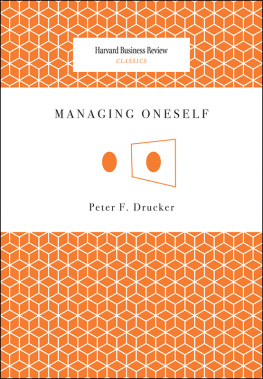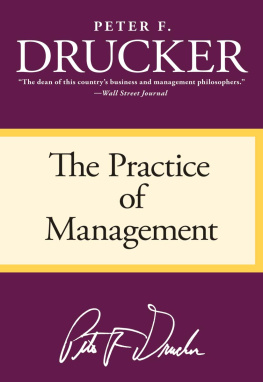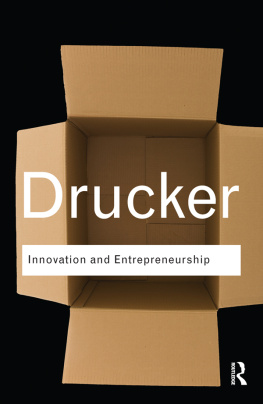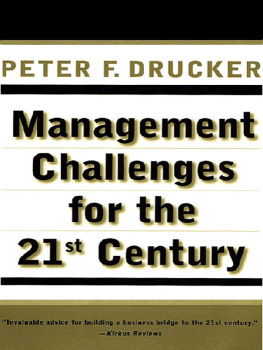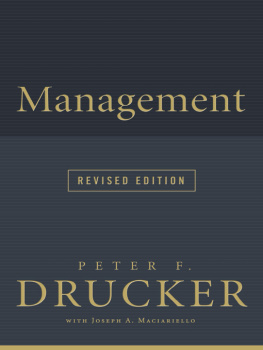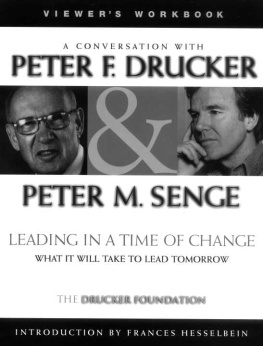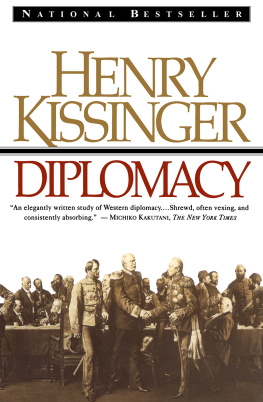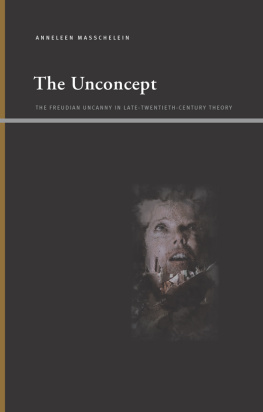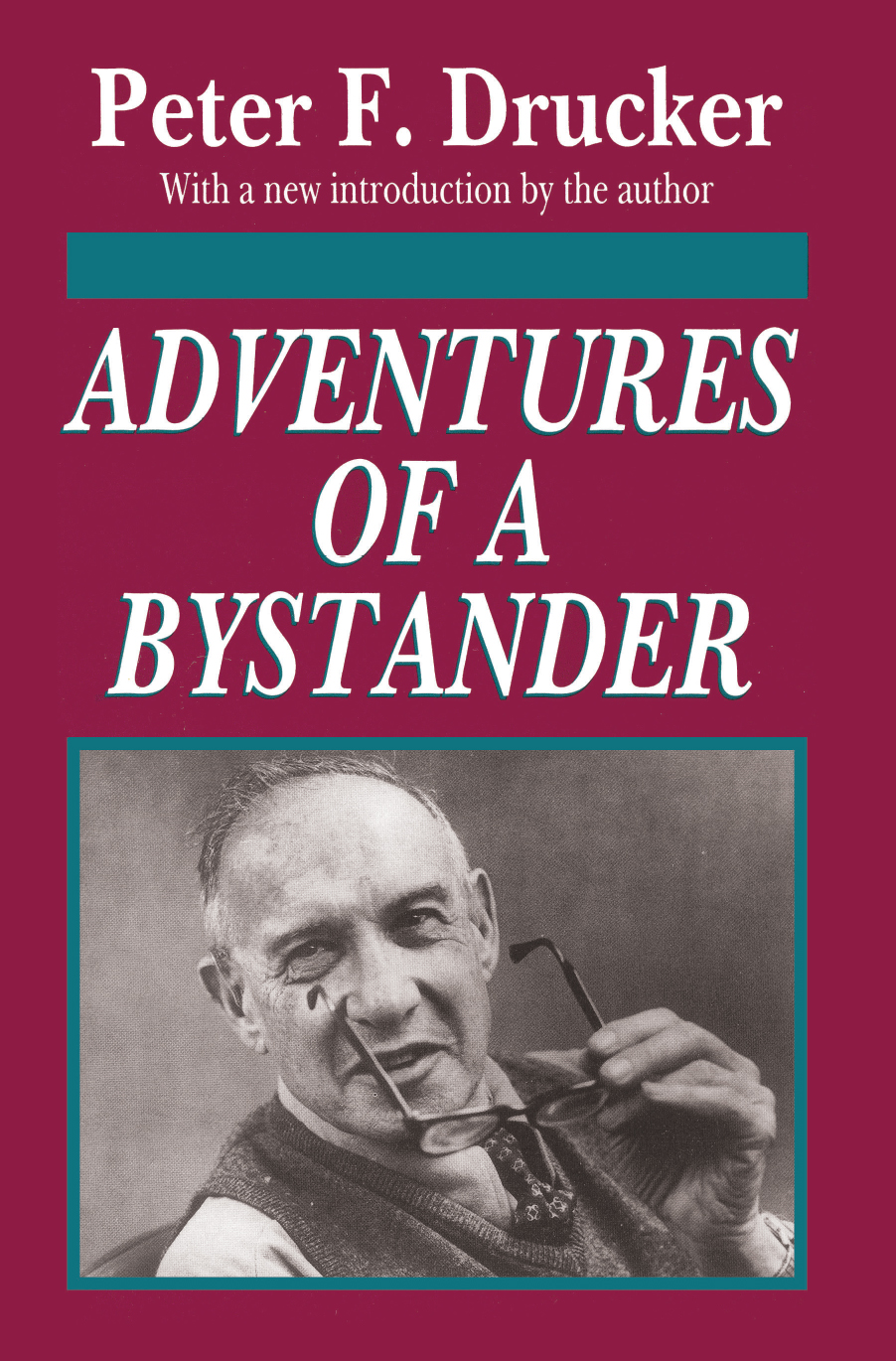Contents
ADVENTURES OF A BYSTANDER
ADVENTURES OF A BYSTANDER
Peter F. Drucker
With a new introduction by the author

Originally published in 1978 by Harper & Row, Publishers.
Published 1994 by Transaction Publishers
Published 2017 by Routledge
2 Park Square, Milton Park, Abingdon, Oxon OX14 4RN
711 Third Avenue, New York, NY 10017, USA
Routledge is an imprint of the Taylor & Francis Group, an informa business
Copyright 1994 by Peter F. Drucker.
All rights reserved. No part of this book may be reprinted or reproduced or utilised in any form or by any electronic, mechanical, or other means, now known or hereafter invented, including photocopying and recording, or in any information storage or retrieval system, without permission in writing from the publishers.
Notice:
Product or corporate names may be trademarks or registered trademarks, and are used only for identification and explanation without intent to infringe.
Library of Congress Catalog Number: 93-47313
Library of Congress Cataloging-in-Publication Data
Drucker, Peter Ferdinand, 1909
Adventures of a bystander/Peter F. Drucker, with a new introduction by the author.
p. cm.
Originally published in 1978 by Harper & Row, PublishersT.p. verso. Includes index.
ISBN: 978-1-56000-738-8
1. Drucker, Peter Ferdinand, 1909- 2. Social scientistsUnited
StatesBiography. I. Title.
H59.D75A33 1994
300.92dc20 93-47313
[B]
93-47313
CIP
ISBN-13: 978-1-5600-0738-8 (pbk)
THIS BOOK IS DEDICATD TO
AMY MARIS DRUCKER
(1975-1978)
WHO GAVE SO MUCH JOY AND LOVE IN SO SHORT A LIFE
Contents
Transaction Books by Peter F. Drucker
The Age of Discontinuity
Concept of the Corporation
End of Economic Man
Future of Industrial Man
Landmarks of Tomorrow
The New Realities
The New Society
Pension Funds Revolution
The Ecological Vision
I taught religion many years ago and greatly enjoyed it. But I never had much use for theology. There are, I am told, some thirty-five thousand different species of flies. But if the theologians had their way, there would be only one. The Right Fly. The Creator glories in diversity. And no species is more diverse than those two-legged creatures, Men and Women. Even as a small child I marvelled at their diversity. And I have never met a single uninteresting person. No matter how conformist, how conventional, or how dull, people become fascinating the moment they talk of the things they do, know, are interested in. Everyone then becomes an individual. The most conventional person I can recall, a banker in a small New England town, who seemed to know nothing but the most hackneyed cliches, became fascinating when he suddenly started talking about buttons throughout the agestheir invention, their shapes, their materials, their functions and useswith a fire and passion worthy of a great lyrical poet. The subject did not interest me much; the man did. He had become an individual. And individuals in their diversity are portrayed in this book.
It is this belief in diversity and pluralism and in the uniqueness of each person that underlies all my writings, beginning with my first book more than fifty years ago. During most of these fifty years centralization, uniformity, and conformity were dominant. The totalitarian regimes in which everybody was to conform, to think the same, to write and paint the same, to be centrally controlledthe Nazis called it & "switched onto the same track" (gleichgeschaltet)were but the head of a universal current. It swept over the democracies as well. But every one of my books and essays, whether dealing with politics, philosophy, or history; with social order and social institutions; with management, technology, or economics, has stressed pluralism and diversity. Where the prevailing doctrines preached control by big government or big business, I stressed decentralization, experimentation, and the need to create community. And where the prevailing approaches saw government and big business as the only institutions and as the & "countervailing powers" of a modem society, I stressed the importance and central role of the non-profit, public-service institutions, the & "third sector"as the nurseries of independence and diversity; as guardians of values; as providers of community leadership and citizenship. And I pointed out how much of society is organized and informed by non-business, non-governmental institutions, the universities, for instance, or the hospitals, each with very different values and a different personality. But I was swimming against a strong current.
Now, at last, the tide has turned, and it has turned my way. The flag- bearer of the collectivist, centralizing, uniformity-imposing parade, Communism, has proven a sham, incompetent even to provide the mere rudiments of effective government, functioning economy, citizenship, and community. And in the West too we are now rapidly decentralizing, indeed uncentralizing. For a generation after World War II, we believed that any sickness was best treated in a centralized hospital, the bigger the better. We are now moving patients into & "outreach" facilities as fat as we can. During the last twenty years Americas large corporations have been shrinking steadily. All the phenomenal employment growth in this periodthe fastest growth in jobs in peacetime history anywherehas been in small and middle-sized enterprises. In the decades following World War II, America built every-bigger consolidated schoolsone cause, I believe, of our educational malaise. Now we are moving towards diverse, decentralized schools, the & "magnet schools," for instance. & "Small is beautiful" is, of course, as much stifling dogma as & "big is best"and equally stupid, as one look at the diversity of Gods creation will show. We surely will not return to the nineteenth- century society, which knew only the smallest and weakest of governments and few institutions except the local church and school. The knowledge society into which we are moving so fast is going to be a society of organizations. But of organizationspluralthat will be diverse, decentralized, multiform. And within these organizations, we are moving away from the standardized, uniform structures that were generally accepted in public administration and business management, & "the one right structure for the typical manufacturing company," for instance, or the & "model government agency." We are moving toward organic design, informed by mission, purpose, strategy, and the environment, both social and physicalthe design I began to advocate forty years ago in The Practice of Management (which came out in 1954).
But while my writings for fifty years have been stressing organic design, decentralization, and diversity, they deal with ideas, that is, with abstractions. They draw heavily on my work with people as a teacher and as a consultant. And I always try to bring in people to exemplify and to illustrate. But still, these individuals are being used to exemplify and to illustrate concepts. I myself have always been more interested in people than in concepts. But I have known all along that as a writer I do better with concepts than with people.
Adventures of a Bystander is thus a book I wrote for myself. It is a book about people. Not about myself; the subtitle of the British edition described my intention:


